Nine Innings: Jason Heyward's Turning Point, Expansion Possibilities and Bryce Harper's Struggles

JASON HEYWARD HAS BECOME A SHOCKINGLY GOOD HIGH-VELOCITY HITTER
By Tom Verducci
Three years into an eight-year, $184 million overpayment for Jason Heyward, the Cubs may finally be getting their money’s worth on the investment. The turning point may have been a blow to the head.
Heyward was sidelined and placed under concussion protocol after crashing into the rightfield wall May 6 trying to snare what became a walkoff home run by Dexter Fowler. He did not return until May 18. During his time away from the field, Heyward made a key adjustment at the plate that has made him—you won’t believe this—the best hitter in baseball against high velocity.
Heyward is an unorthodox hitter who has gone through many swing changes over the years. But while on the DL, away from the pressure of performing, he made a key change to his setup.
Heyward used to lean toward the baseball as he started his swing. He would bring his front foot down closer to the plate than his back foot, tilt at the waist and drop his head to move down toward the baseball. In effect, he was pushing his center of gravity forward—away from his core and toward the plate—which caused a slower, longer swing.
With the help of hitting coach Chili Davis, Heyward tweaked his setup to promote a more balanced approach. By keeping his head back, reducing his spine tilt and putting his front foot down even with his back foot, Heyward keeps his center of balance over his core, which promotes a faster turn into the baseball. He is letting his hands work without so much extraneous movement of his head and body.
Additionally, this better, more upright setup allows Heyward to drop his back elbow into the “slot” position close to his body. Previously, the tilted position caused his back elbow to work away from his body, which slowed his swing.
Think about a figure skater. When a figure skater wants to turn fast, the skater tucks his or her arms close to the body; when the skater wants to slow down, he or she moves the arms away from the body.
The book on Heyward used to be that you could easily beat him with velocity in or up—the kind of pitches that exploit a long, slow swing. Throw that book away. Ever since Heyward came back May 18 with his new setup, he is crushing fastballs.
Look at the difference in how Heyward has handled fastballs since his adjustment as compared to last season:
Jason Heyward vs. All Fastballs
| Avg. | SLG | HR |
|---|---|---|---|
2017 | .287 | .436 | 8 |
Since May 18, 2018 | .371 | .613 | 2 |
The effect is even more pronounced as velocity goes up. His improvement against fastballs at 95+ MPH is astounding:
Jason Heyward vs. 95+ MPH Fastballs
| Avg. | SLG | HR |
|---|---|---|---|
2017 | .250 | .318 | 0 |
Since May 18, 2018 | .409 | .727 | 2 |
Finally, take a look at this: Heyward has hit more homers off high-velocity fastballs halfway through this season than he did in the previous three years combined:
Jason Heyward vs. 95+ MPH Fastballs
| Pitches | HR |
|---|---|---|
2015-17 | 937 | 1 |
2018 | 132 | 3 |
For this season, Heyward is hitting .444 against fastballs 95 MPH and faster. That ties him with Francisco Lindor as the best elite fastball hitter in the major leagues.
Since coming off the DL, Heyward has provided three of the most stunning swings in baseball:
• On June 6, Heyward hit a walkoff grand slam off Phillies lefthander Adam Morgan on a 97 MPH fastball. Morgan has thrown 107 fastballs this year. Heyward is the only one to turn around one of those heaters for a home run.
• On June 11, Heyward scorched a single off a fastball from Brewers reliever Josh Hader, a hit with an exit velocity of 107 MPH. It was the hardest-hit ball off a Hader fastball all year. Hader has thrown 138 fastballs to lefties this season. Heyward is the only lefty with a hit off one of them.
• On June 16, Heyward homered off a 99 MPH fastball from Jordan Hicks of the Cardinals. Hicks has thrown 411 fastballs this year. Heyward is the only batter to homer off one of those pitches.
Until now, Heyward has been an unmitigated offensive bust, especially considering the investment the Cubs made in him. Through 320 games with Chicago, his OPS+ is 79. That makes him the second-worst Cubs outfielder of all time with that many games with the team, ahead of only Doug Dascenzo (67), who was a bench player for 48% of his games with the Cubs.
Heyward still is only 28 years old—right in his physical prime—so a major upgrade to his game is very possible. Is it sustainable? It’s too early to know just yet. But two things are for certain: he has a much better hitting base these days, and if he can keep hitting like this, Chicago’s lineup just got a whole lot deeper.
THE METS WOULD BE FOOLISH TO TRADE JACOB DEGROM OR NOAH SYNDERGAARD
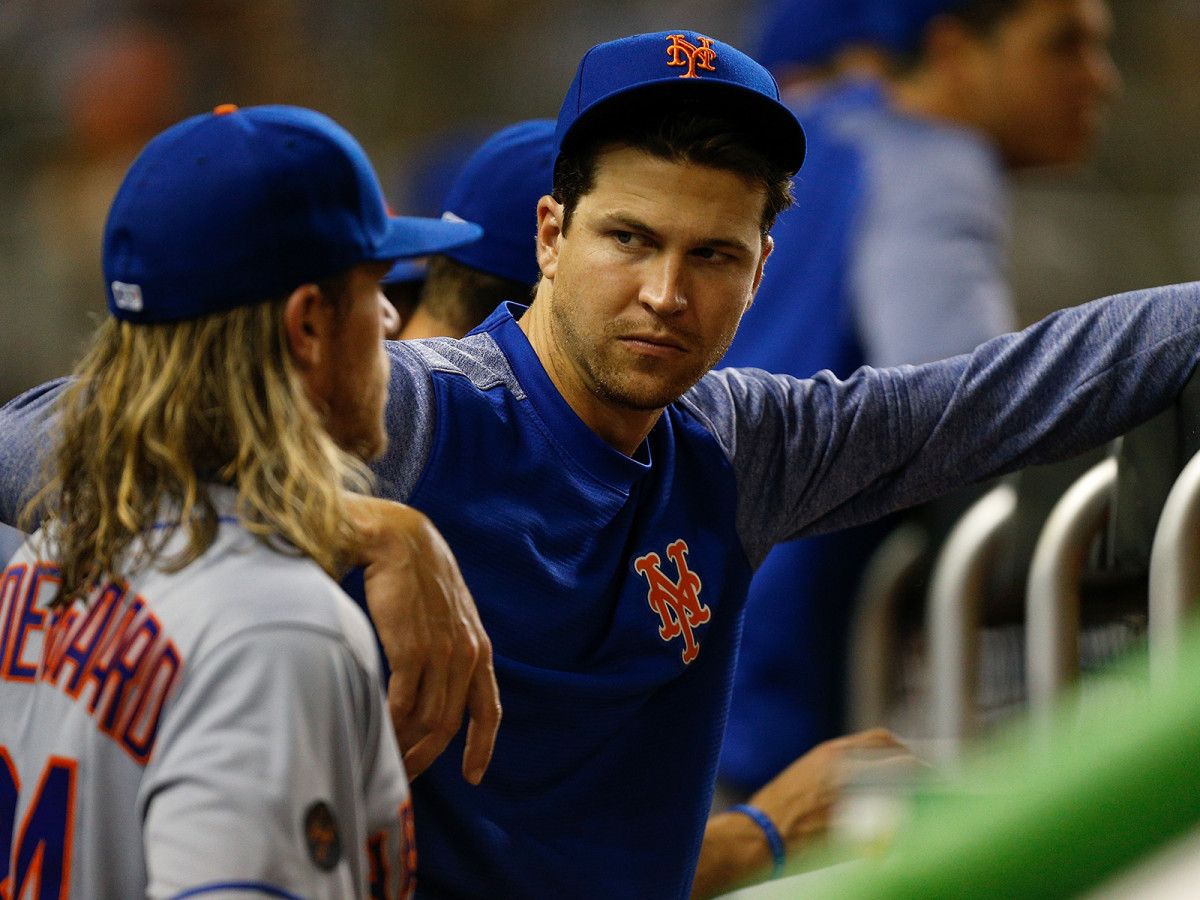
By Tom Verducci
The Mets have made many dumb moves in recent years, but even entertaining the idea of trading Jacob deGrom and/or Noah Syndergaard would plumb new depths to their foolishness.
The Mets hold five more combined years of control on deGrom and Syndergaard—that’s about 135 starts after this season. One of the most valuable commodities in this game is a young, controllable, front-of-the-rotation pitcher. The Mets have two of them.
The minute you trade a commodity like that is when you begin searching for a commodity to replace it. Good luck.
Trade rumors get more out of hand every year. Manny Machado plays a game in Chicago (where a radio station employee held a sign endorsing a trade to the Cubs; how’s that for goosing the “news”) and suddenly “rumors” abound about the Cubs trading for Machado. It was total nonsense. And so we get people getting worked up about the fabrication of Gleyber Torres for deGrom. But hey, we long ago lost even the modest sophistication required to separate actual trade talks from the stuff that is just made up to generate clicks and listeners.
The fantasy trade game is fueled in part by the proliferation of prospect coverage, with its rankings and lists. Everybody is the next big star, because, well, who wants to miss out on being “on” the next big star? The system runs on hype.
Reality check: think about the 2012 draft, just as a random example. Sixty players were chosen in the first round and the supplemental round that followed. Do you know how many of them have managed to post a modest career WAR of 3.0 since then? Fourteen. That’s 23% of all of the best available players in the country. Fourteen out of 60.
deGrom put up a 3.1 WAR in his rookie year alone.
You better have impact players on the mound and in the lineup to win. The Mets at least have two of them now. And there are no guarantees that trading either one for “a package” of players will leave them better off.
Watch: Rangers' Jose Trevino Dedicates Walk-Off Hit to Late Father
Think about the 2000 Phillies. They traded Curt Schilling, one of the best pitchers in the game, with a year and a half left on his contract, for “a package” of four players from Arizona. The “package” was underwhelming, built around a former hyped No. 1 pick, Travis Lee, and pitchers Omar Daal, Vicente Padilla and Nelson Figueroa. The Phillies spent the next six years out of the playoffs.
Think about the 2016 White Sox. They had Chris Sale, then 27, under control cheaply for three more seasons. They traded him to the Red Sox for “a package” of four players. One of them, pitcher Michael Kopech, is walking 6.1 per nine innings with a 5.20 ERA in Triple A. Another, pitcher Victor Diaz, has thrown 105 innings in four pro seasons, none this year because of shoulder trouble. Another, Luis Alexander Basabe, is playing well, but is still in A ball. And the key to the trade, Yoan Moncada, as hyped a prospect as you could find, is a career .225/.313/.400 hitter after more than 500 major league plate appearances. At age 23, he strikes out a whopping 35% of his turns at bat.
Go back and read the hype on Kopech, Moncada and Lucas Giolito, the pitcher the White Sox “stole” in the Adam Eaton deal with Washington—the one with a career ERA of 5.54.
Since the White Sox traded Sale, they have been the worst team in baseball (91-140, .394). Their attendance has fallen 21%. Their payroll has been slashed by 25%. Their television ratings, down eight percent last year, were the worst in baseball other than those for the Athletics.
There are huge risks for the Mets to trading deGrom and/or Syndergaard, who are known commodities. You risk not just counting on “a package” of hyped prospects, but also sliding further into obscurity in a large market.
SOMETHING OR NOTHING? MAKING SENSE OF THREE STORYLINES IN BASEBALL
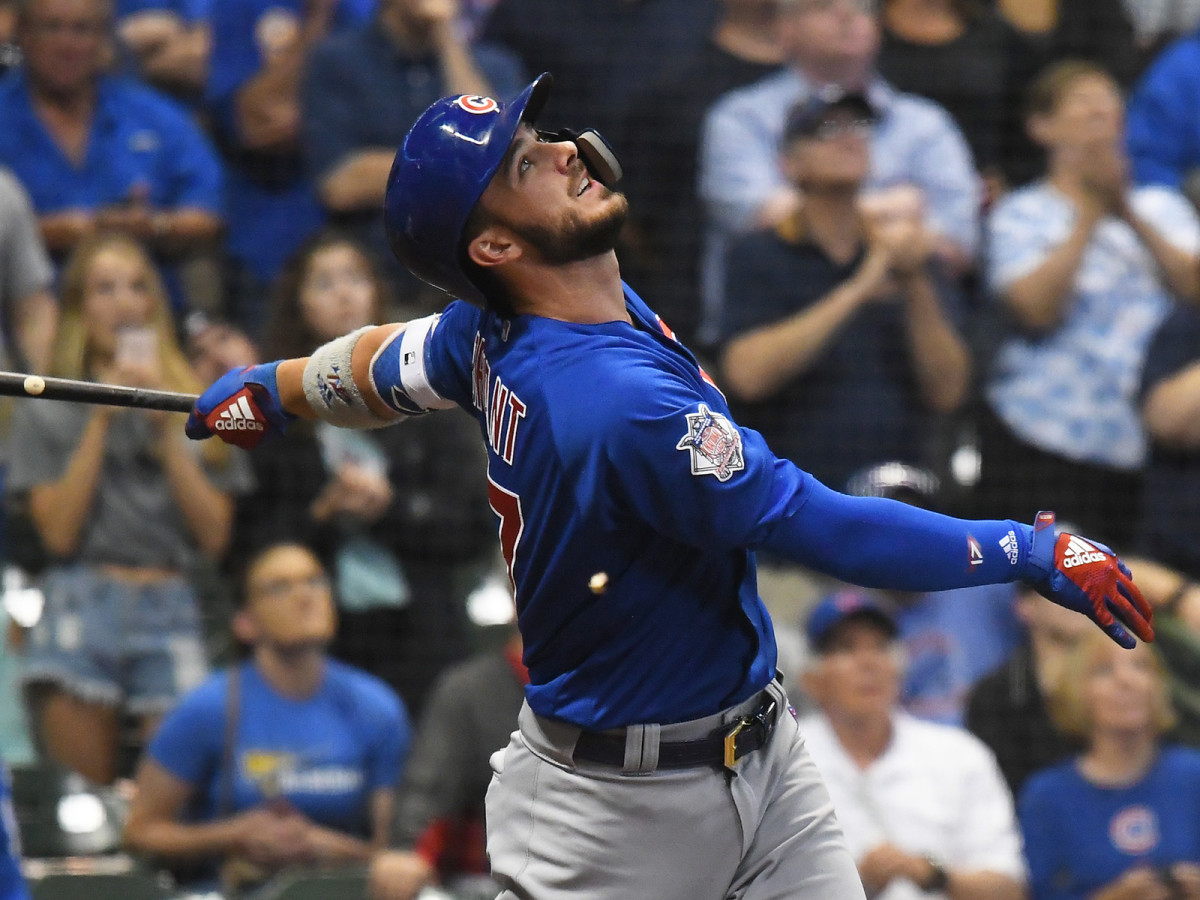
By Jon Tayler
Are these stats, teams and players for real, or is it just a mirage? We weigh the numbers on Something or Nothing.
1. The Dodgers’ Kershaw-less surge
We all wrote Los Angeles off for dead after a brutal start to the season, but with just a month until the All-Star break, good times are back in the City of Angels. Despite falling to the Giants on Sunday to snap a five-game winning streak, the Dodgers are 37–33 and have gone 11–3 since the start of June. That’s pulled them to within 1 ½ games of the Diamondbacks for first place in the NL West and bumped their playoff odds all the way up to 81.2%—50 points higher than Arizona.
What’s notable about that stretch is that it’s all been with Clayton Kershaw sidelined. The three-time Cy Young winner has made just eight starts this season and none since May 31, when he went on the disabled list for a second time with a back injury. Ordinarily, that kind of loss sinks seasons. Instead, the Dodgers have soldiered on without him.
That’s not to say, though, that Kershaw can just take the rest of the year off and watch his team cruise to yet another division title. The Dodgers’ rotation has a 4.53 ERA in the month of June, and the DL is crowded with starters: Along with Kershaw, impressive rookie Walker Buehler, Hyun-jin Ryu, and Rich Hill are all shelved. Kershaw’s absence did open up a spot for Ross Stripling, who’s been sensational (a 1.53 ERA and 59 strikeouts in 47 innings as a starter). But the Dodgers aren’t a good bet to keep this up unless Kershaw gets back in the picture.
2. Kris Bryant’s power outage
Where have all the homers gone for Kris Bryant? Over the last calendar month, the former MVP has gone deep just once in 27 games and 129 plate appearances—a two-run shot off the Cardinals’ Michael Wacha in a Saturday rout of St. Louis. His slugging percentage over that stretch is a meager .373. Is something wrong with the Cubs’ stellar third baseman?
Rob Manfred and MLB's Declining Attendance Issue
The underlying numbers suggest some issues. Bryant’s strikeout rate and swinging-strike rate have both ballooned since the end of May. His contact rate has dropped 10 points over that span as well. And his percentage of infield fly balls has skyrocketed, going from 3.8% on May 28 to 27.3% currently. All of that suggests a hitter who’s late on the hard stuff and isn’t squaring it up. Indeed, his hard-hit percentage on fastballs has fallen from 37.7 last month to 15 so far in June, his average exit velocity on those pitches has gone from 88.4 mph in May to 78.8 this month, and his swing-and-miss rate at in-zone fastballs has risen eight percentage points since the end of May. All of that has left him vulnerable to offspeed pitches: His strikeout rate on those is a staggering 75% in June.
It’s a gnarly slump, but that’s likely just what it is: a slump. Barring injury, Bryant is too talented a hitter to keep getting beat by fastballs. There’s likely an adjustment to be made there, but don’t expect a player this good to stay down for much longer.
3. The Tigers' position as contenders
The Tigers are below. 500—36–37, to be exact—and their -23 run differential suggests they’re lucky to even to be there. But Detroit is gamely hanging on to second place in the AL Central, just 2 ½ games behind the Indians for first, and has won five straight. The Rally Goose is powerful stuff.
This isn’t the Tigers team we expected after they sold off veteran assets last winter and entered 2018 with a roster full of rookies, past-their-prime veterans and Quad A fillers. But Detroit’s been led by unexpectedly good seasons from little-known names like John Hicks, Jeimer Candelario, Matt Boyd, and Blaine Hardy, as well as a breakout campaign from Nick Castellanos. That’s made up for a subpar season from former AL Rookie of the Year Michael Fulmer, the loss of Miguel Cabrera to a season-ending biceps injury last week, and the continued decay of Victor Martinez and Jordan Zimmermann.
But can this last? Detroit’s offense is average at best and lacks power, and the pitching is uneven. The team is unlikely to buy at the trade deadline and far more likely to ship out productive veterans like Francisco Liriano and Leonys Martin to teams in need. It’s also hard to imagine them overcoming a far more talented Cleveland squad or edging out the Mariners or Angels for a wild-card spot. The odds aren’t in their favor: Fangraphs gives Detroit just a 0.3% chance of making the playoffs, thanks in part to the toughest remaining schedule in the Central.
Manager Ron Gardenhire deserves a ton of credit for how his team has fought, but it’s hard to see the Tigers making any October noise.
RANK 'EM: FIVE POSSIBLE DESTINATIONS FOR AN EXPANSION TEAM
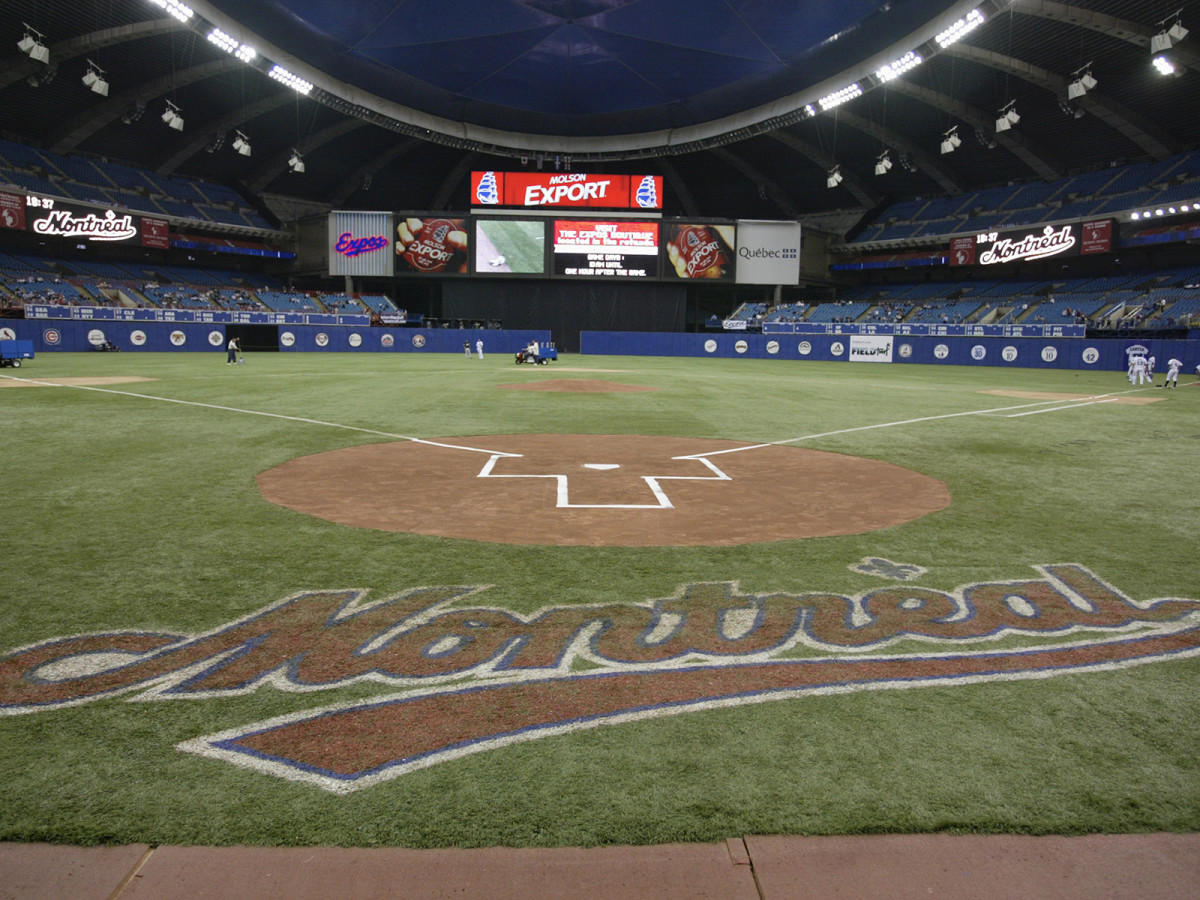
By Gabriel Baumgaerner
1. Montreal: Just call them the Expos and bring them back. This is a team with an established legacy whose attendance flagged because of a general lack of interest (and investment) from owner Jeffrey Loria, who went on to treat the Miami Marlins with similar callousness. It’s a longshot, but it would be a boost to see Major League Baseball return to one of North America’s great cosmopolitan cities with such a rich baseball history.
2. Portland: Ciara and Russell Wilson are on board! I’m a proponent of Major League Baseball testing in cities that have established devoted fan bases in other markets. The Trail Blazers remain one of the NBA’s most reliable draws even in down years. With a greater metro area population of 2.2 million, why not try a baseball team?
3. Nashville: See above. Nashville Predators fans have become some of the most voracious and informed hockey fans in the U.S. The town is draped with mustard yellow and midnight blue come playoff time. A warning that a successful hockey city does not mean it will work for baseball (see Tampa Bay), but Nashville already hosts one of the best college teams in the nation (Vanderbilt), so gathering a fan base shouldn’t be too difficult.
4. Charlotte: It’s a growing city that already hosts a successful minor league team and an NFL franchise. The Knights led all of Minor League attendance in 2016 (it trailed the Indianapolis Indians in 2017) and has ideal weather for an entire Major League season. There appears to be a built-in and healthy demand.
5. Oklahoma City: This wouldn’t be much of a free-agent draw, but I think of how central the Thunder have become to the city’s identity. Why wouldn’t they approach baseball with a similar enthusiasm?
ROUNDTABLE: HOW MUCH CONCERN DO YOU HAVE OVER BRYCE HARPER'S SEASON SO FAR?
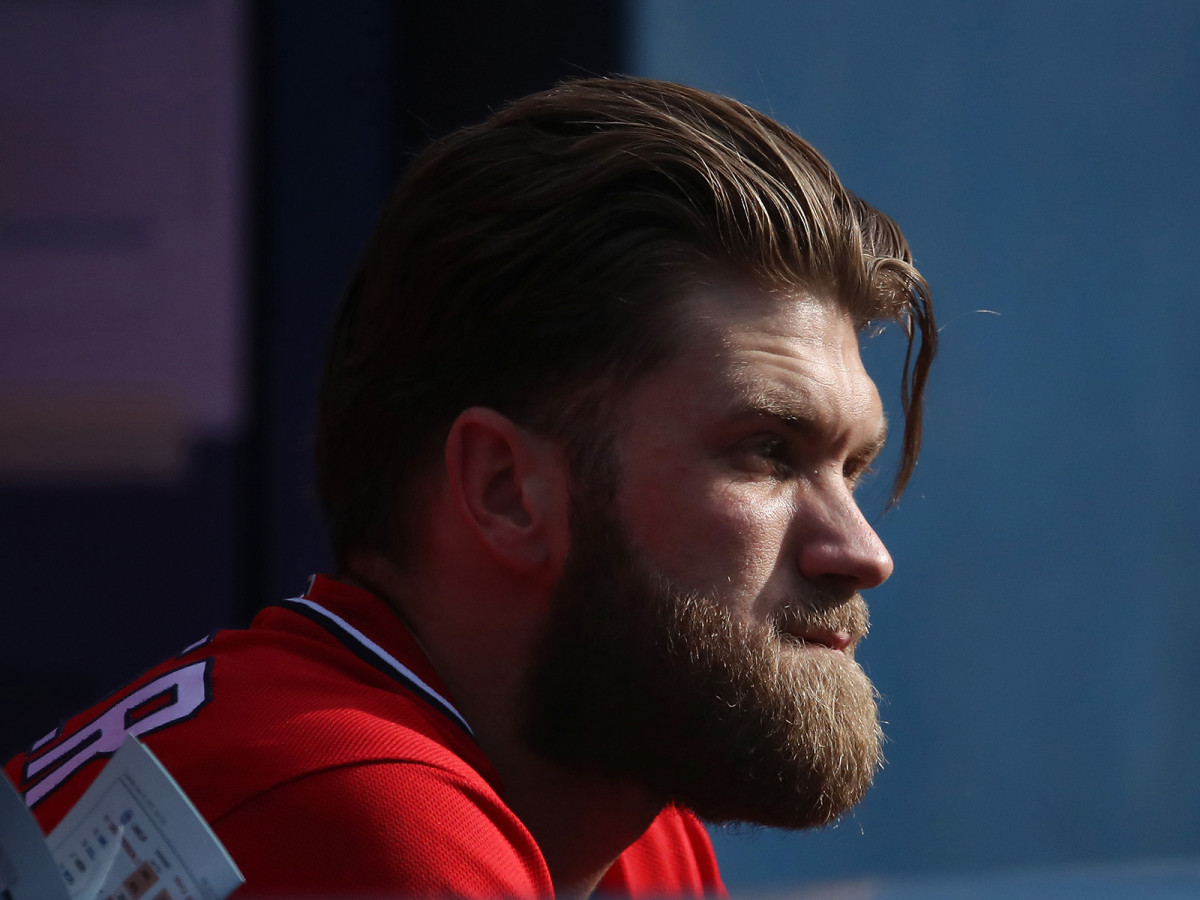
Emma Baccellieri: Harper is understandably under the microscope more so than usual right now—with this being his walk year and extra pressure from key teammates like Adam Eaton and Daniel Murphy having been sidelined for so much of the season—but there's a pretty legit root to some of the recent concern. What especially stands out to me about his numbers so far is A) the fact that he's been pulling the ball more than ever this year, and B) how teams have responded to that. In 2017, defenses shifted against him 103 times. This year, less than halfway through the season? Already 161 times. He's gone from facing the shift in a fifth of his plate appearances to more than half of them, and it seems to be taking a toll on his performance at the plate. Finding a way to adjust to the shift looks like a key to getting his season back on track. On another note, the current panic also serves as a reminder of just how good Harper is. His last few weeks have been especially rough, yes, but the guy still has an 127 OPS+! The fact that this feels like such a serious failure underscores how high his benchmark for "normal" is.
Gabriel Baumgaertner: It’s fair to be concerned at this point. Nobody’s questioning Harper’s natural talent or the fact that he’s barely seeing anything to hit (he leads the league with 51 walks in just 294 plate appearances). The problem is that when he’s swinging, he’s not making great contact for a player who is supposed to be one of the game’s elite talents. He trails peers like Mike Trout and Manny Machado in every hard-hit rate metric (barrels per plate appearance, exit velocity) and is routinely behind less talented players like Russell Martin and Matt Adams in how often he barrels the ball up. Add that to the fact that he’s still only had one great season—his 2015 MVP campaign—and it’s reasonable to think that some teams may not want to break the bank to acquire him. That said, he is still just 25 years old and has demonstrated superstar abilities. He’ll get the money and probably be worth it, but his 2018 struggles are legitimate.
Nationals General Manager Calls Comments on Bryce Harper 'Cowardly, Gutless'
Michael Beller: I’m not too concerned about Harper. The .217 batting average obviously isn’t ideal, but he has a .355 OBP, a walk rate north of 17% and 19 homers. His advanced stats suggest he’s hitting into terrible luck. Harper has a 43% hard-hit rate, which ranks 28th in the majors, but just a .216 BABIP, fifth-lowest among 159 qualified hitters. For sake of comparison, the four players sandwiching Harper on the hard-hit rate leaderboard—Christian Yelich and Brandon Belt ahead of him, Jorge Soler and Eduardo Escobar behind him—have BABIPs of .358, .358, .340 and .343, respectively. The increase in strikeout rate is certainly a concern and gives Harper less room for error, but I feel pretty confident that water will find its level here.
Connor Grossman: As he prepares to enter the richest contract negotiations in baseball history, how could Bryce Harper not be concerned? It appears he'll approach 50 homers this season and surpass 100 RBIs—just a couple of surface-level benchmarks for an elite hitter. That still doesn't conceal his piss poor average, career-high strikeout pace and inability to take a walk since April. If he is hurt, as Jon Tayler wonders aloud below, wouldn't it make more sense (given his impending contract negotiations) for Harper to hit the DL rather than grind through a season with questionable numbers under the hood? His first two and a half months this year have been quite a mystery. This offseason looks like it'll be an even bigger one.
Evan Longoria Expected to Miss Six to Eight Weeks Following Surgery On Fractured Hand
Jon Tayler: Ready for some really scary numbers about Bryce Harper? He’s currently sporting the lowest contact rate (70.0) and highest swinging-strike rate (13.8) of his career. After an 0-for-5 afternoon with two strikeouts against the Blue Jays on Sunday, he’s hitting .199 with 49 punchouts in 168 plate appearances since the start of May, and over the last 30 days, only two hitters in all of baseball have a higher strikeout rate. His walk rate has cratered, with just 13 free passes in his last 39 games. And his whiff rates on breaking and offspeed stuff in the month of June are 44.8 and 42.9%, respectively.
That’s all cause for alarm: Harper looks as lost as can be and is swinging through absolutely everything. What’s most worrisome is that the last time he struggled like this, it was amid his worst full season as a pro to date: 2016, when he hit just .243/.373/.441. Our own Tom Verducci reported that year that he was nursing a shoulder problem that sapped his power coming off an MVP-winning campaign. Could another injury be behind his scuffles?
The season-long numbers are still on Harper’s side. His hard-hit percentage and average exit velocity are both excellent. But we’re now on six weeks of prolonged and brutal results that suggest something is wrong. Color me concerned.
HANDICAPPING THE RACE TO BASEBALL'S FIRST 30-30 SEASON SINCE 2012
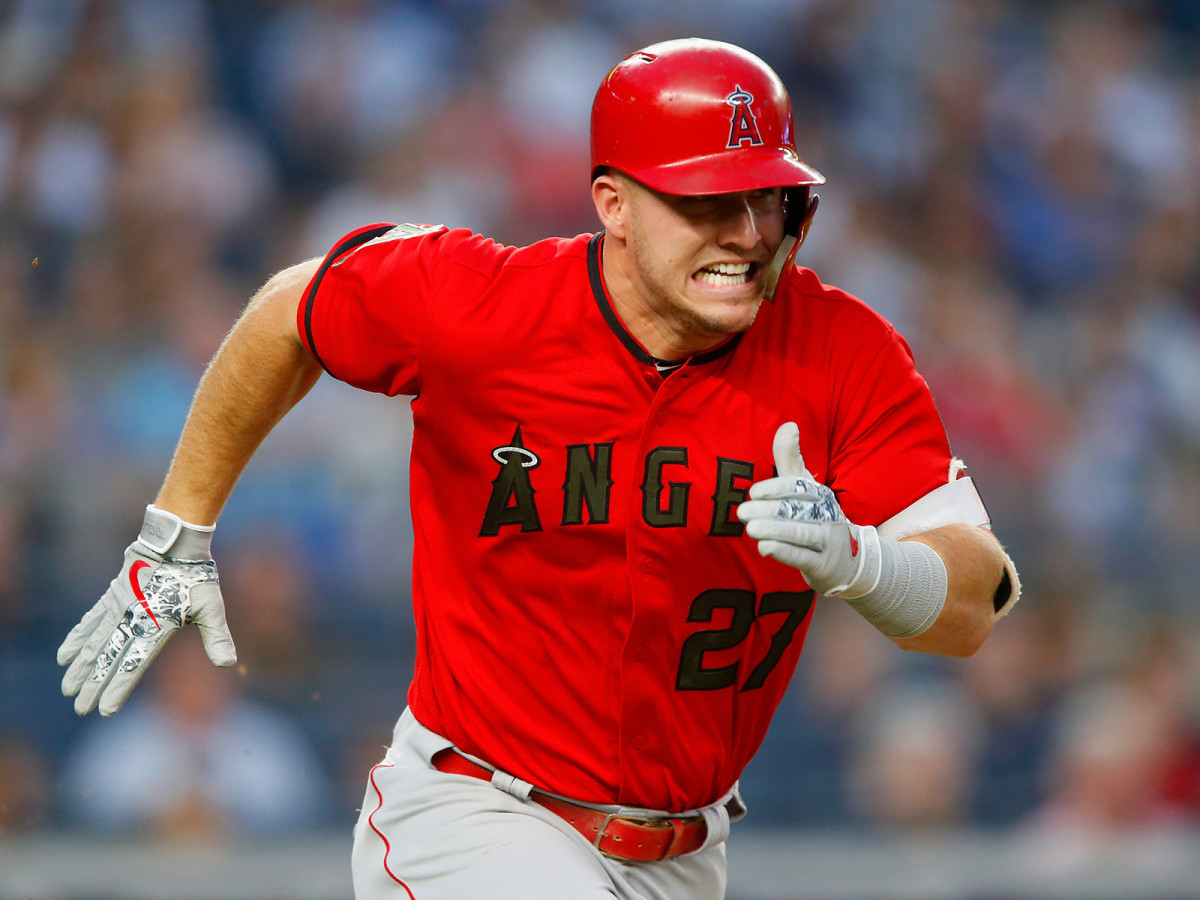
By Michael Beller
The 30-30 club is one of baseball’s most prestigious associations, a group that includes 48 players who have combined for 60 seasons with at least 30 homers and 30 steals. Some of the biggest names in the sport’s history, from Willie Mays to Barry Bonds to Vlad Guerrero, have entered its doors. It’s suffering, however, from a lack of new membership. The club hasn’t added a player to its ranks since 2012, when Mike Trout and Ryan Braun both went 30-30. The five-year 30-30 drought is the longest since 1958 through 1962. Hank Aaron broke that streak in 1963 when he hit 44 homers and swiped 31 bags, his lone 30-30 season.
There was a time when 30-30 wasn’t just common, but expected. There was at least one 30-30 player in every season from 1987 (there were four that year: Joe Carter, Howard Johnson, Eric Davis and Darryl Strawberry) through 2012. The drought may finally be coming to an end this season. Three players, Mike Trout, Mookie Betts and Javier Baez, are on pace for at least 30 homers and 30 steals. Let’s handicap each guy’s chances to give baseball its first 30-30 player in six seasons.
Trout is the only player of the three who has been here before. He has a league-leading 23 homers and 13 steals in 72 games, which puts him on pace 51 homers and 30 steals (rounded to the nearest whole number). He’ll get the seven homers he needs probably by the All-Star break or shortly thereafter. The steals could come down to the wire. He hasn’t stolen a base since June 2, meaning if he doesn’t thieve one in the Angels’ next game, he’ll fall off the 30-steal pace. Mike Scioscia is giving him free rein on the basepaths, and Trout is taking full advantage. He stole 30 bases two years ago in a season where he missed the 30-30 club by one homer. We’ll set Trout’s odds at getting to 30-30 at 2-to-1, and the bet here is that he’ll do it, stealing base No. 30 in the Angels’ final game of the year.
How Mississippi State Baseball Turned a Season That Began in Humiliation Into a Trip to Omaha
Betts seems to like the safest pick to end the drought. Even after spending about three weeks on the DL, Betts’ 18 homers and 13 steals put him on pace for 48 homers and 34 steals. Had Betts not missed that time and played to the same per-game pace in the 19 games he spent on the shelf, he’d already have 24 roundtrippers and 18 steals, which would have placed 30-30 in sight by the end of July, or so. As it stands, though, Betts is still more likely than not to give the 30-30 club its 49th member. The one factor that could complicate matters is the abdominal strain that forced him to the DL. He has one homer since returning, but has yet to attempt a steal. Still, we’re giving Betts even-money odds to end baseball’s 30-30 drought.
The last player tracking toward 30-30 is also the longest shot to keep the pace and join the club. Baez entered the Cubs’ series finale with the Cardinals on Sunday with 14 homers and 12 steals, putting him on pace for a 34-homer, 30-steal season. That, unfortunately, could go on hold after Baez left Sunday’s game after a Jack Flaherty fastball beaned him square on the elbow. Assuming Baez didn’t suffer a serious injury, 30-30 will remain in his sights. He doesn’t have much room for error, though. Unlike Trout and Betts, Baez isn’t a lock to reach the requisite 30 homers. He’s barely playing ahead of the 30-homer pace, and his swing-and-miss ways leave him susceptible to prolonged slumps. Baez hasn’t homered since June 2, a stretch covering 40 plate appearances. He has struck out 15 times in that stretch, though. The steals, too, will be a tall order. Baez has a .293 OBP, and, combined with his power, that gives him precious few opportunities to steal bases. Give Baez a 5-to-1 chance to get to 30-30.
Baseball is long overdue for a 30-30 season. These three players will give us another great subplot to watch for the rest of the year.
WHAT HAPPENED TO MIGUEL SANó?
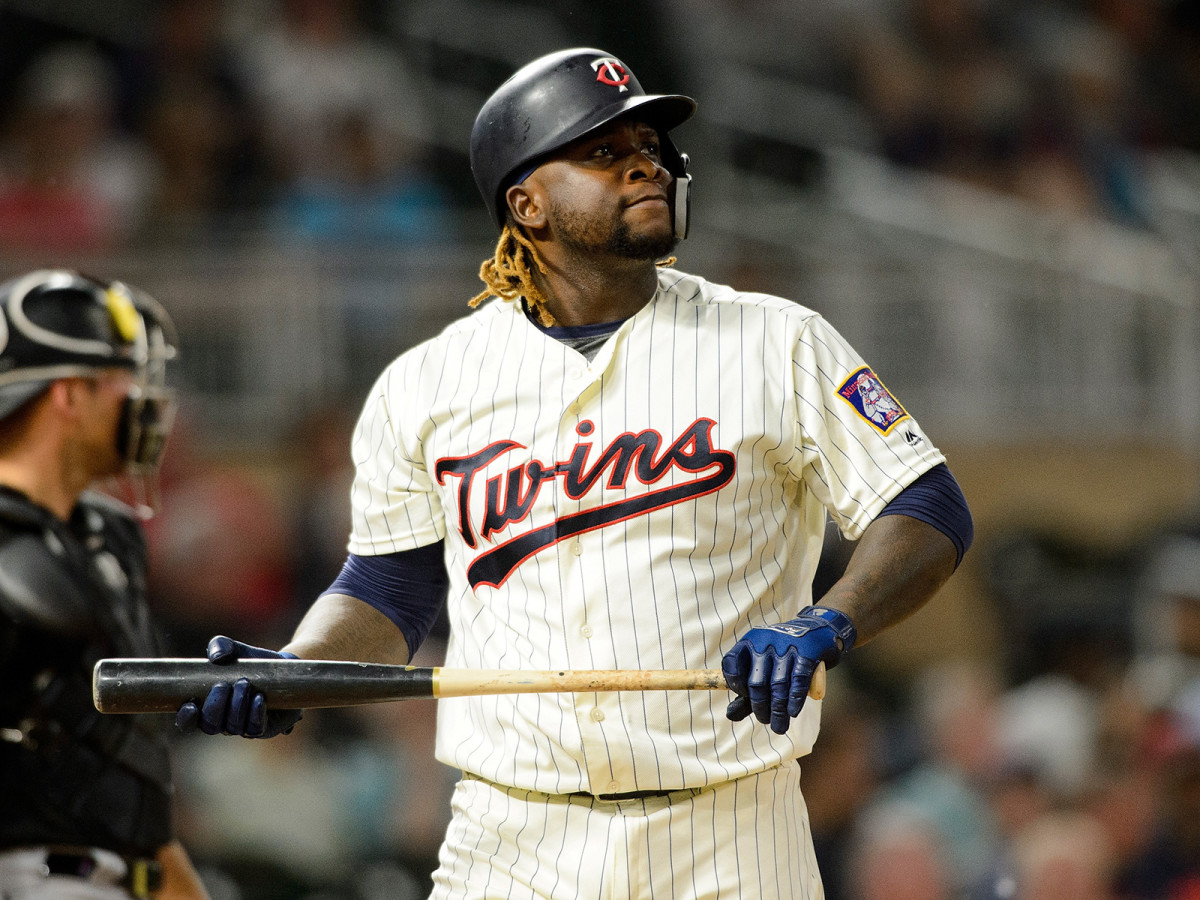
By Emma Baccellieri
So much can change in a year. Just ask Miguel Sanó. On June 14, 2017, he went 2-for-4 against the Seattle Mariners, including a two-run home run to centerfield. He finished the day hitting .297/.397/.590, making him one of the American League’s top performers at the plate and easily the crown jewel of the Minnesota Twins’ offense.
But exactly one year later, June 14, 2018 brought the news that Sanó was being sent down to High-A Fort Myers. The move came across as a surprise—labeled right away as a “stunner” and “shocker”—but perhaps it shouldn’t have been quite so much of one, given that the third baseman was hitting .203/.270/.405 in a sad performance that’s been just one part of his recent rocky stretch. Sanó has been beset by lower-body injuries, with a stress reaction in his shin that sidelined him for a good chunk of the second half last season and resulted in surgery, along with a hamstring problem that sent him to the disabled list earlier this spring. In December, he was accused of sexual assault, prompting a league investigation that ultimately found insufficient evidence for any disciplinary action.
Twins Send Miguel Sano to Single A One Year After All-Star Appearance
He’s garnered a lot of headlines in the last year, then, and none of them have been good. Lately, Sanó hasn’t just looked like a lesser player, but almost a different one completely. His plate discipline has disappeared, as he’s gone from an approach that’s heavy on strikeouts to one that’s so weighed down by them that he can only collapse. He’s struck out in more than 40% of his plate appearances this season, chasing more than 30% of pitches outside the zone. He’s especially suffered on the inner third of the plate, where he’d hit .280 for his career entering this year. This season? Just .130.
The third baseman is still just 25, a year removed from an All-Star Game appearance and three years from a top-three finish in Rookie of the Year voting. It’s hard not to see this trip to the minors as an inflection point: the beginning of the end, or a hard reset that propels him back up to where he started. In other words, Sanó’s 2018 could be something like Don Money’s 1972, when the young third baseman’s performance at the plate cratered, with an OPS+ of 75, before he rebounded and went on to make four All-Star teams in the next six years. Or it could be kicking off an arc like that of 1980s Mariner Jim Presley—who earned MVP votes at 24, had a lackluster performance at 25, and was out of the major leagues forever at 30. Which way will Sanó go? For now, south to the minor leagues, but from there, it’s anyone’s guess.
WHAT'S ON TAP: A RED SOX-MARINERS REMATCH HEADLINES THE WEEK AHEAD
By Michael Beller
Hitter to Watch: Marcell Ozuna
Ozuna has finally gotten hot along with the weather in the Midwest, slashing .404/.446/.846 with seven homers and 17 RBI in 56 plate appearances in June. The Cardinals offense has let down its starting pitching often this season, which makes Ozuna’s waking up not only welcome, but absolutely necessary.
Pitcher to Watch: Kenta Maeda
Maeda returned from the DL last week, allowing two runs in five innings against the Rangers. He took a no-decision, striking out one while surrendering five hits and three walks. He may not be Clayton Kershaw or Corey Seager, but the Dodgers need him to stay healthy if they are going to challenge for their sixth straight NL West crown. He’s slated for two starts this week, facing the Cubs on Monday and Mets on Sunday.
Series to Watch: Mariners at Red Sox, Friday through Sunday
The Mariners and Red Sox just finished a great four-game series this weekend in Seattle, which the two teams split two games apiece. What better way to follow that up than with a return series in Boston the very next weekend? The Red Sox and Mariners enter this week with the best and fourth-best records in baseball, respectively. Assuming both teams stay on schedule, the pitching matchups will be Wade LeBlanc against Steven Wright, Mike Leake against Eduardo Rodriguez, and Marco Gonzales against Chris Sale.
FROM THE VAULT: CELEBRATING LOU GEHRIG
By Connor Grossman
Just after Cal Ripken Jr. set a new major league record by playing in his 2,131st consecutive game, SI's Robert Creamer penned a lengthy piece on baseball's original Iron Man. The late, great Lou Gehrig was born 115 years ago on Tuesday. More than four decades separate the careers of Lou Gehrig and Ripken, yet Creamer highlights the parallels between two of the game's icons. He paints a vivid portrait of Gehrig, an extraordinary figure on the field but an unusual one off of it.
Enjoy the excerpt below and check out the entire piece here.
"Oddly, for all the warmth he projected in photographs--he was a handsome man with a warm, wonderful smile--Gehrig was not easy to get to know personally. He was uncomfortable socially. He was a mama's boy who often said in his early years with the Yankees that his mother was his best girl. He did make strong, lasting friendships, but they came slowly, developing over long periods of time. Unlike Ruth or Mantle, each of whom cheerfully welcomed rookies to the Yankees, Gehrig did not. He was more like Joe DiMaggio: reserved, aloof, hard to get close to. He was penurious, too, except toward his parents, and he was famous among teammates and sportswriters for the small tips he left. He had a great sense of probity, of what he considered proper behavior, and he avoided the social ramble that Ruth and other players loved."
